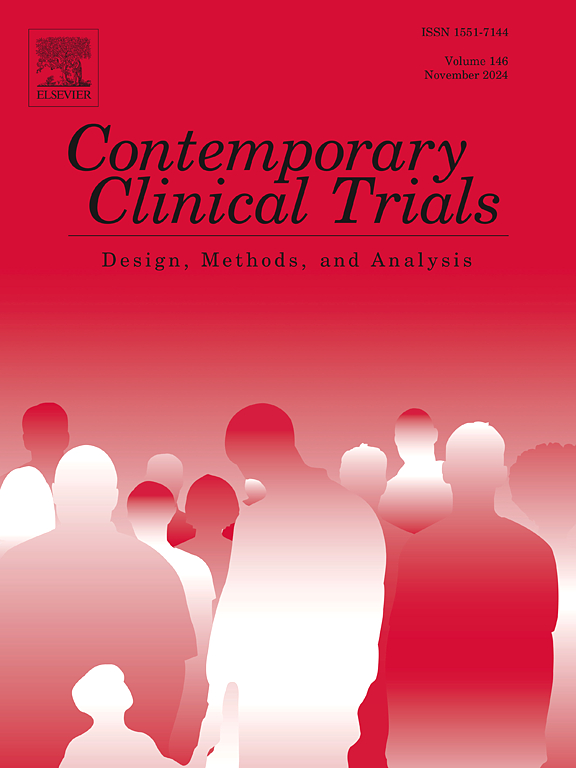Recruiting sexual minority youth for a drug abuse prevention trial: Comparing Instagram and Facebook
IF 2
3区 医学
Q3 MEDICINE, RESEARCH & EXPERIMENTAL
引用次数: 0
Abstract
Background
Despite youth's shift from Facebook to Instagram, the literature on how to use Instagram to recruit youth for clinical trials is scant. This paper reports procedures and comparative metrics on the use of Facebook and Instagram to recruit a nationwide sample (N = 1216) of LGBQ youth, aged 15 and 16 years, for an online drug abuse prevention trial.
Methods
Our recruitment campaign used ads on Facebook and promoted posts on Instagram. Ads and posts shared common images, headlines, and captions. Ads and posts directed youth to a study recruitment website for informed consent and enrollment procedures.
Results
Our campaign ran for 48 non-consecutive days, yielded N = 1216 participants, had a total cost of $25,400.31, and an average cost per participant of $20.89. Facebook ads and Instagram promoted posts ran for a similar number of days. However, compared to Instagram, Facebook ads cost more than twice as much (115 %), had 51 % fewer clicks, and had an average cost-per-click that was 338 % higher. Furthermore, despite being shown to users more than 4 times as often and garnering more than twice as many unique views, Facebook ads had a click-through-rate that was 90 % lower than Instagram promoted posts.
Conclusion
Instagram promoted posts outperformed ads on Facebook by driving more potential participants to the study recruitment website and for less money.
招募性少数群体青少年进行药物滥用预防试验:比较Instagram和Facebook。
背景:尽管年轻人从Facebook转向Instagram,但关于如何利用Instagram招募年轻人参加临床试验的文献却很少。本文报告了使用Facebook和Instagram在全国范围内招募年龄分别为15岁和16岁 的LGBQ青年样本(N = 1216)进行在线药物滥用预防试验的程序和比较指标。方法:我们的招聘活动在Facebook上使用广告,在Instagram上使用推广帖子。广告和帖子共享共同的图片、标题和说明文字。广告和帖子将年轻人引导到一个研究招募网站,以获得知情同意和注册程序。结果:我们的活动连续进行了48天,产生了N = 1216名参与者,总成本为25,400.31美元,每位参与者的平均成本为20.89美元。Facebook上的广告和Instagram上的推广帖子运行的天数相似。然而,与Instagram相比,Facebook的广告成本是Instagram的两倍(115 %),点击量少了51 %,每次点击的平均成本高出33 %。此外,尽管Facebook广告向用户展示的频率是Instagram的四倍多,获得的独立浏览量也是Instagram的两倍多,但它的点击率却比Instagram的推广帖子低90% %。结论:Instagram上的推广帖子比Facebook上的广告效果更好,因为它能让更多的潜在参与者去研究招聘网站,而且花费更少。
本文章由计算机程序翻译,如有差异,请以英文原文为准。
求助全文
约1分钟内获得全文
求助全文
来源期刊
CiteScore
3.70
自引率
4.50%
发文量
281
审稿时长
44 days
期刊介绍:
Contemporary Clinical Trials is an international peer reviewed journal that publishes manuscripts pertaining to all aspects of clinical trials, including, but not limited to, design, conduct, analysis, regulation and ethics. Manuscripts submitted should appeal to a readership drawn from disciplines including medicine, biostatistics, epidemiology, computer science, management science, behavioural science, pharmaceutical science, and bioethics. Full-length papers and short communications not exceeding 1,500 words, as well as systemic reviews of clinical trials and methodologies will be published. Perspectives/commentaries on current issues and the impact of clinical trials on the practice of medicine and health policy are also welcome.

 求助内容:
求助内容: 应助结果提醒方式:
应助结果提醒方式:


